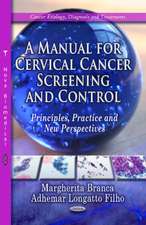Intermediate Filaments: A Review
Autor P. Trauben Limba Engleză Paperback – 16 noi 2011
Preț: 641.53 lei
Preț vechi: 754.74 lei
-15% Nou
Puncte Express: 962
Preț estimativ în valută:
122.76€ • 131.27$ • 102.35£
122.76€ • 131.27$ • 102.35£
Carte tipărită la comandă
Livrare economică 18 aprilie-02 mai
Preluare comenzi: 021 569.72.76
Specificații
ISBN-13: 9783642702327
ISBN-10: 3642702325
Pagini: 280
Ilustrații: X, 266 p.
Dimensiuni: 170 x 244 x 15 mm
Greutate: 0.45 kg
Ediția:Softcover reprint of the original 1st ed. 1985
Editura: Springer Berlin, Heidelberg
Colecția Springer
Locul publicării:Berlin, Heidelberg, Germany
ISBN-10: 3642702325
Pagini: 280
Ilustrații: X, 266 p.
Dimensiuni: 170 x 244 x 15 mm
Greutate: 0.45 kg
Ediția:Softcover reprint of the original 1st ed. 1985
Editura: Springer Berlin, Heidelberg
Colecția Springer
Locul publicării:Berlin, Heidelberg, Germany
Public țintă
ResearchDescriere
Research on cytoskeletal elements of eukaryotic cells has been expand ing explosively during the past 5 to 10 years. Due largely to the employment of electron and immunofluorescent microscopy, significant results have been obtained which have provided interesting new insights into the dynamics of nucleated cells at the structural, physiological, as well as developmental levels. While a substantial amount of knowledge has accumulated on the function of microfilaments and microtubules, the roles of the third major class of cytoskeletal structures in vertebrate cells, the intermediate filaments, have largely resisted clarification. The investigation of cultured cells and of tissues from various developmental stages has furnished a host of information on the inter-and intracellular distribution of the different types of intermediate filaments and led to the contention that they have a structural and organizing function in the cytoplasm of vertebrate cells. However, the results of recent experimen that vertebrate cells can function perfectly in the tation have shown complete absence of cytoplasmically extended intermediate filament meshworks. It is legitimate to suppose, therefore, that their function in vertebrate cells is much more subtle and complex than generally presumed. Our interest in the structure and function of intermediate filament proteins was initiated approximately 7 years ago while working on the regulation of macromolecular synthesis in picornavirus-infected mam malian cells. In attempts to demonstrate virus-induced changes in the nuclear protein components of the host cells, the nonionic detergent extraction method was used to purify nuclei.
Cuprins
1 Introduction.- 2 Distribution of Intermediate Filaments.- 2.1 Intercellular Distribution of Intermediate Filaments.- 2.1.1 Intermediate Filaments in Early Differentiation.- 2.1.1.1 Murine Embryogenesis.- 2.1.1.2 Chick Embryogenesis.- 2.1.1.3 Teratocarcinoma Cells.- 2.1.1.4 Epithelial Cell Differentiation.- 2.1.1.5 Myogenesis.- 2.1.2 Intermediate Filament Proteins in Differentiated Tissues.- 2.1.2.1 Cytokeratins.- 2.1.2.2 Desmin.- 2.1.2.3 Vimentin.- 2.1.2.4 Glial Fibrillary Acidic Protein (GFAP).- 2.1.2.5 Neurofilament Proteins.- 2.1.3 Intermediate Filaments in Disease.- 2.1.3.1 Tumor Diagnosis.- 2.1.3.2 Mallory Bodies.- 2.1.3.3 Neuropathies.- 2.1.3.4 Autoantibodies.- 2.1.4 Intermediate Filament Proteins in Evolution.- 2.1.5 Potential Intermediate Filament Subunit Proteins.- 2.1.5.1 Synemin.- 2.1.5.2 Paranemin.- 2.1.5.3 66 kDa Protein.- 2.1.5.4 68 kDa Protein.- 2.1.5.5 95 kDa Protein.- 2.1.5.6 50 kDa Neurofilament Proteins.- 2.1.5.7 60 to 70 kDa Intermediate Filament-Associated Proteins.- 2.1.6 Intermediate Filament Proteins in Cell Culture.- 2.1.6.1 Vimentin.- 2.1.6.2 Desmin.- 2.1.6.3 Glial Fibrillary Acidic Protein.- 2.1.6.4 Neurofilament Proteins.- 2.1.6.5 Cytokeratins.- 2.2 Intracellular Distribution of Intermediate Filaments and Their Interaction with Organelles and Proteins.- 2.2.1 Microtubules.- 2.2.2 Microfilaments.- 2.2.3 Mitochondria.- 2.2.4 Plasma Membrane.- 2.2.5 Nucleus.- 2.2.6 Endoplasmic Reticulum and Golgi Apparatus.- 2.2.7 Other Cellular Organelles.- 2.2.8 Proteins and Enzymatic Activities.- 2.2.8.1 Filaggrin.- 2.2.8.2 Microtubule-Associated Proteins (MAPs).- 2.2.8.3 Enzymes and Other Proteins.- 2.2.9 Intermediate Filaments in Muscle.- 2.3 Intracellular Reorganization of Intermediate Filament Systems.- 2.3.1 Mitosis.- 2.3.2 Microinjection of Antibodies.- 2.3.3 Virus Infection.- 2.3.4 Receptor-Mediated Endocytosis.- 2.3.5 Drugs, Toxins, and Growth Factors.- 2.3.6 Physical Manipulations.- 2.3.7 Cell Spreading.- 2.4 In Vivo Assembly of Intermediate Filaments.- 2.5 Isolation and Subunit Composition of Intermediate Filaments.- 3 In Vitro Assembly and Structure of Intermediate Filaments.- 3.1 In Vitro Reconstitution.- 3.1.1 Cytokeratin Filaments.- 3.1.2 Vimentin and Desmin Filaments.- 3.1.3 Glial Filaments.- 3.1.4 Neurofilaments.- 3.2 Helical Substructure.- 3.3 Architecture of Protofilaments.- 3.3.1 Three-Strand Model of Protofilaments.- 3.3.2 Four-Strand Model of Protofilaments.- 3.4 Function of the N-Terminal Polypeptide.- 3.5 Structure of Intermediate Filament Subunit Proteins.- 3.5.1 Peptide Mapping.- 3.5.2 Amino Acid Composition.- 3.5.3 Amino Acid Sequence.- 3.5.3.1 Desmin.- 3.5.3.2 Vimentin.- 3.5.3.3 Glial Fibrillary Acidic Protein.- 3.5.3.4 Neurofilament Proteins.- 3.5.3.5 Cytokeratins.- 3.5.3.6 Wool ?-Keratins.- 3.5.3.7 General Remarks on the Structure of Intermediate Filament Proteins.- 4 Synthesis of Intermediate Filament Proteins in Vitro.- 5 Posttranslational Modification of Intermediate Filament Proteins.- 5.1 Phosphorylation of Intermediate Filament Proteins.- 5.1.1 Neurofilament Proteins.- 5.1.2 Desmin and Vimentin.- 5.1.3 Cytokeratins.- 5.1.4 Phosphorylation Sites.- 5.1.5 Functional Role of Intermediate Filament Protein Phosphorylation.- 5.2 Ca2+-Dependent Proteolysis of Intermediate Filament Proteins.- 5.2.1 Neurofilament Proteins.- 5.2.2 Glial Fibrillary Acidic Protein.- 5.2.3 Vimentin and Desmin.- 5.2.4 Cytokeratins.- 5.2.5 Relatedness of Different Ca2+-Activated Proteinases.- 5.2.6 Putative Site of Action of Ca2+-Activated Proteinases.- 5.3 Modification of Intermediate Filament Proteins by Transglutaminases.- 5.3.1 Neurofibrillary Tangles.- 5.3.2 Transglutaminases in Nonneural Cells.- 5.3.3 Properties and Putative Site of Action of Transglutaminases.- 5.3.4 Are Transglutaminases and Ca2+-Activated Proteinases Jointly Involved in Receptor-Mediated Endocytosis?.- 6 Cellular Function(s) of Intermediate Filaments and Their Subunit Proteins.- 6.1 Interaction in Vitro of Intermediate Filament Proteins with Nucleic Acids and Histones.- 6.2 Are Intermediate Filament Proteins Involved in Information Transfer?.- 6.3 Possible Function of Intermediate Filament Proteins in Nerve Cells.- 6.4 Possible Function of Intermediate Filament Proteins in Muscle Cells.- 7 Summary and Concluding Remarks.- References.















